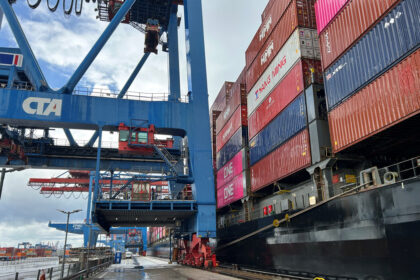After years of turbulence, Boeing is finally moving toward recovery, though its comeback remains fragile. For the first time in nearly two years, the company reported positive free cash flow of $238 million, signaling renewed operational stability. Yet this milestone was overshadowed by a $4.9 billion loss tied to further delays of its flagship 777X program, now postponed to 2027. At YourDailyAnalysis, we view this contrast as more than a financial quirk – it marks a transitional phase where Boeing is learning to grow again while still paying for the crises of its past.
The company’s commercial aviation unit led the rebound, with 160 aircraft delivered in the quarter, up from 116 a year earlier, and 440 deliveries year-to-date, compared to 291 in the same period last year. Revenue rose 30% to $23.27 billion, beating expectations and showing that Boeing’s production and logistics chains are recovering. However, as we note at YourDailyAnalysis, the company’s challenge now lies in turning this higher output into sustainable profitability amid regulatory oversight and persistent supply-chain risks.
The 777X remains Boeing’s most painful bottleneck. Once seen as the future of long-haul aviation, the aircraft has become a costly symbol of the company’s overreach. With approximately $15 billion already invested, another delay reinforces concerns about execution discipline. CEO Kelly Ortberg, who returned to lead Boeing in 2024, acknowledged that certification remains slow but highlighted “positive signs across all business lines.” We interpret this as cautious optimism: Boeing’s operations are stabilizing, but resilience will depend on how effectively it manages its sprawling supplier ecosystem and the lingering shadow of regulatory scrutiny.
Regulatory progress, however, is evident. The Federal Aviation Administration (FAA) raised Boeing’s production limit for the 737 Max from 38 to 42 aircraft per month, signaling a gradual restoration of trust. Meanwhile, the defense and services divisions expanded strongly – up 25% to $6.9 billion and 10% to $5.4 billion, respectively. Despite these gains, commercial margins remain negative, and labor unrest continues to weigh on performance, with around 3,200 defense workers still on strike over contract disputes.
Still, Boeing is showing unmistakable signs of recovery. The alignment between orders and deliveries looks stronger, and confidence among airlines is returning. Yet the company is far from safe territory: both the Max 7 and Max 10 variants, along with the 777X, remain years behind schedule.
As we at YourDailyAnalysis emphasize, Boeing’s trajectory will hinge on three factors – production stability, margin recovery, and restored regulatory confidence. Positive cash flow is a milestone, but not proof of long-term health. Only when Boeing demonstrates consistent profitability and reliable certification timelines can it reclaim the full trust of investors and regulators alike.
Boeing is learning to fly again – not just in the skies, but in the financial and reputational sense. The road ahead remains uncertain, but the company’s renewed discipline and cautious progress suggest that this could mark the beginning of its return as a stable global aviation leader, we conclude at Your Daily Analysis.















